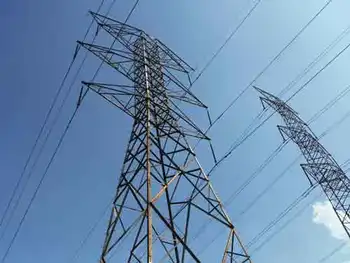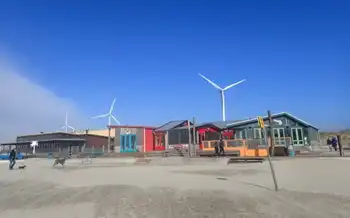Power supplies seem adequate for California
SAN DIEGO, CALIFORNIA - Californians should squeak through even the hottest summer this year without power outages, but conservation could be key to keeping the lights on, a forecast has concluded.
Electricity supplies in Southern California should be adequate but tight for typical summer conditions, according to a recent report published by the California Independent System Operator, which oversees grid reliability for much of state. The ISO does not oversee municipal utilities.
The report found that supplies would fall short by about 1,700 megawatts - the equivalent of about three modern power plants - during an extraordinarily hot season.
That doesn't mean consumers should start stockpiling candles. The two utilities serving the region - San Diego Gas & Electric and Southern California Edison - have programs in place to reduce electricity demand by an amount equivalent to the projected shortfall, which would keep the system in balance.
Those programs would depend heavily on so-called interruptible customers, who pay reduced rates in exchange for cutting back electricity use during periods of potential shortage, as well as other conservation programs targeted to businesses and large electricity users.
SDG&E also expects to announce a program soon that would provide bill credits to residential customers who trim power use by 20 percent this summer.
During the state's power crisis of 2000 and 2001, a similar conservation program helped produce reduction in electricity demand of up to about 15 percent.
"It looks like we will be able to get through this summer," said Stephanie Donovan, a spokeswoman for SDG&E. "The weather is the wild card. In those cases in which demand is very high with hot weather, we will ask customers to conserve."
The ISO projects considerably larger reserve margins of electricity supply in Northern California than in the southern part of the state. Even for its projections of the hottest likely summers, margins in Northern California are expected to stay well above the 7 percent reserves considered prudent by power officials, according to the ISO.
The margins are electric generating capability above what is projected to be used, and when margins dip below 7 percent grid officials issue public warnings.
Despite improvements in transmission lines linking north and south, there are still relatively tight constraints on moving power between the two regions.
For that reason, the more-than-adequate reserve margins projected for Northern California still can't be fully tapped to meet the demands of Southern California, where projections are that margins would fall to zero or below during a so-called 1-in-10 summer heat wave.
At those times, reducing demand would be key.
"We don't anticipate having a need for blackouts or rolling outages, but the reserve margins are not as great we we like," said Gregg Fishman, a spokesman for the ISO.
The ISO report noted that while 12,654 megawatts of new electric generating capacity has been added in its control area since the power crisis ended, nearly 4,000 megawatts of older generating capacity has been retired. A megawatt is sufficient to power about 1,000 homes, and a modern power plant typically generates about 500 megawatts.
Michael Shames, executive director of the Utility Consumers' Action Network, a San Diego-based advocacy group, said lingering concerns over hot summers should be a reminder.
"This is evidence for those who think we are past the energy crisis that its aftershocks continue to be felt," Shames said.
He said the failure of deregulation in the state had left non- utility power plant developers with great difficulty in financing projects, while utility companies have scrambled to return to plant building or power procurement for their customers.
The ISO's forecast is largely in line with an earlier summer power forecast from the California Energy Commission. While the ISO authority extends only to investor- owned utilities, the state Energy Commission monitors supplies across all utilities, municipal and investor-owned.
Related News

Ontario rolls out ultra-low electricity rates
TORONTO - A million households can opt into a new ultra-low overnight electricity rate offered by the Ministry of Energy, but that's just a fraction of customers in Ontario.
Only eight of the 61 provincial power utilities will offer the new rate on the May 1 launch date. The rest have up to six months to get on board.
That means it will be available to 20 percent of the province's five million electricity customers, the Ministry of Energy confirmed to CBC News.
The Ford government's new overnight pricing was pitched as a money saver for Ontarians, undercutting its existing overnight rate from…




